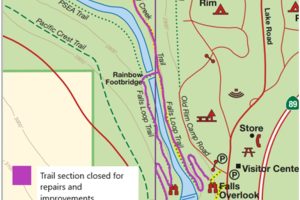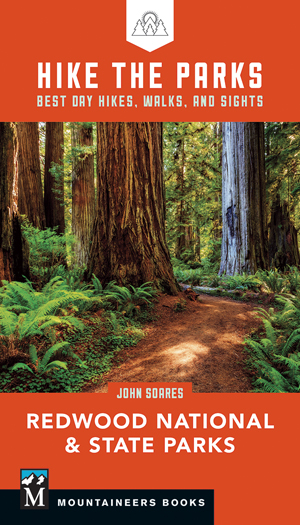Another danger awaiting day-hikers and backpackers: rock falls, rock slides, avalanches, and landslides. These all involve materials on slopes that rapidly make their way downhill. Many factors can trigger the movement of materials down a slope: water saturation of soils, water freezing in rock cracks, an earthquake, and the never-ending process of entropy that seeks to break everything down into smaller pieces and spread those pieces around.
Rock slides, Rock falls, Avalanches, Landslides
Make sure you are not in the path. Think about where you walk, where you eat lunch, where you sleep. Educate yourself about snow avalanches if you spend any time in the high country when snow is present. Learn to spot areas that could be potentially unstable. And be aware that your own footsteps – or those of a hiking companion – can trigger rockfalls, avalanches, and landslides.
A large rock fall recently occurred in Yosemite National Park in the Sierra Nevada (Fall, 2010). It crashed into Curry Village on the valley floor:
The slide destroyed five cabins and partially damaged at least three others, according to a park statement. Three visitors were treated for minor injuries.
The volume of rocks cascading from the granite face was estimated at about 1,800 cubic yards, or about 180 truck loads, said Vickie Mates, a park spokeswoman.
There was another, smaller rock slide in the same area Tuesday afternoon. No one was injured then.
Your Take
What’s your experience with these? Ever seen a rockslide or an avalanche? What precautions do you take?











[…] I’ve discussed the hazards of rockfalls and other falling objects for hikers and campers, and especially the early October rockfall that damaged parts of Curry Village in Yosemite National Park. […]